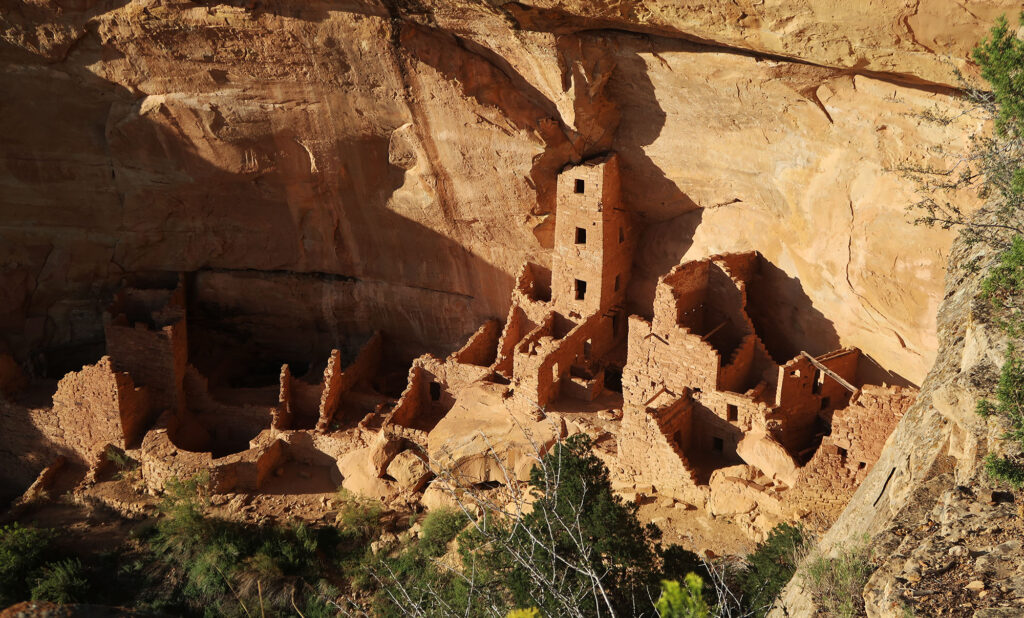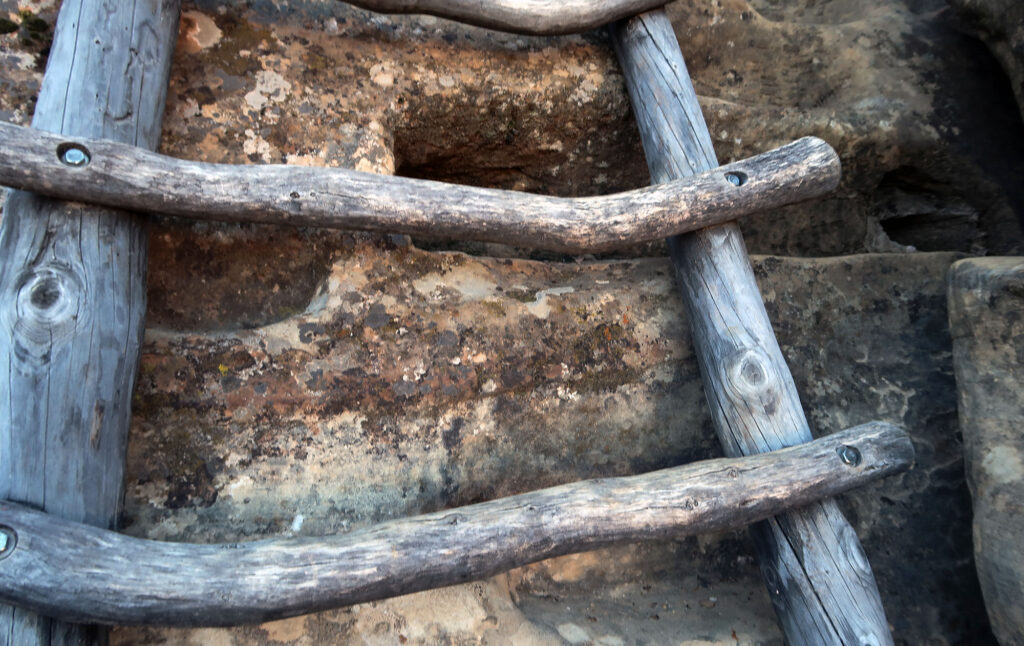August 27, 2021
Seven Centuries Later
During my recent visit to Mesa Verde National Park, I took a ranger-guided tour of Square Tower House. The “house” consists of a set of stone dwellings built into a cliffside by the ancestral Puebloans. The park contains roughly half a dozen major dwelling sites periodically open to the public in some fashion. Square Tower in particular features the tallest ancient structure in the park.
The evening before my tour, I took a quick auto-tour of Mesa Verde’s main park road. This afforded an excellent view of Square Tower House from above at sunset. The ranger-led tours should be booked well in advance. But you can see many of the most famous dwellings from above without any prior planning.

Arrival and Context
The next morning I arrived bright and early for our tour. As of 2021, the tour cost $25 per person. It left multiple times a day for a 90-minute fully guided excursion down into the cliff dwelling. They capped attendance around a dozen folks. The tours tend to sell out weeks in advance, but last-minute cancellations also happen.
The ranger led us along a very discrete ‘herd path’ off of the paved visitor trail. We sat on a precipice above one of the mesa’s many deep canyons. Against a gorgeous sunrise, she began a brief lecture providing archeological and cultural context. Mesa Verde, she told us, had been inhabited for thousands of years. Roughly 750 years ago, the ancestral Puebloans built the intricate cliff dwellings we would see today. And then, suddenly, they left.

Heading down to the cliff dwelling
Then we began our descent. Today a series of fixed ropes and wooden ladders make this journey relatively safe and easy. We took our time, turning to face inwards towards the ladders. A broad range of ages can participate in this tour, from school-aged children to grandparents. That said, I found the descent quite rugged!

Along one pitch, the ranger highlighted small carved “holds” in the cliff face. The ancestral Puebloans used these indentations (just a few inches in depth and breadth) to climb in and out of the dwelling. Sometimes they did this carrying food or water or other heavy loads. They likely did not use ladders or ropes or metal fencing: just a few discrete hand and foot holds. At first, this sounded a bit crazy to me: what if you fell?! But every society accepts some mortal peril in the realm of transit. Just consider all the times you’ve driven at 65 mph down a two-way road just a couple of feet from oncoming traffic.

Square Tower House
We followed our guide along a narrow dirt path through the vegetation. A short while later we arrived at Square Tower House. The structure seemed twice as impressive from “ground level” (we were still hundreds of feet above the canyon floor).
Our guide explained the iconic “tower” was probably all that is left from a much larger system of rooms and dwellings. She showed us various finer features of the complex. A series of structures rose high above the dwelling towards a “crows nest”.
Beneath the dwellings were subterranean “kivas”. These ceremonial/gathering rooms evolved from the very earliest dwellings built atop the mesa. A typical kiva from 800 years ago involved a round, sunken room with benching around the whole perimeter. There were spots for a fireplace and egress, and periodic square notches interrupting the benching. Kivas exist throughout the broader southwest region into modern Puebloan and southwestern architecture. For example today you’ll hear of living rooms with “kiva-style fireplaces”.

Up and Out
We had some time to explore the various ruins solo. The ranger and another volunteer were on hand for any questions we may have had. Then it was time to ascend back towards the parking area.
These small guided tours provide an incredibly unique experience to get up close and personal with a national park that is also a UNESCO World Heritage Site. That said they book up well in advance. Check early and often and be vigilant for last-minute cancellations. The available tours change from season to season. For instance, Cliff Palace (the most famous) was closed off when I visited. But Mug House and Long House also had guided tours. Long House in particular can handle a much higher volume of visitors.

